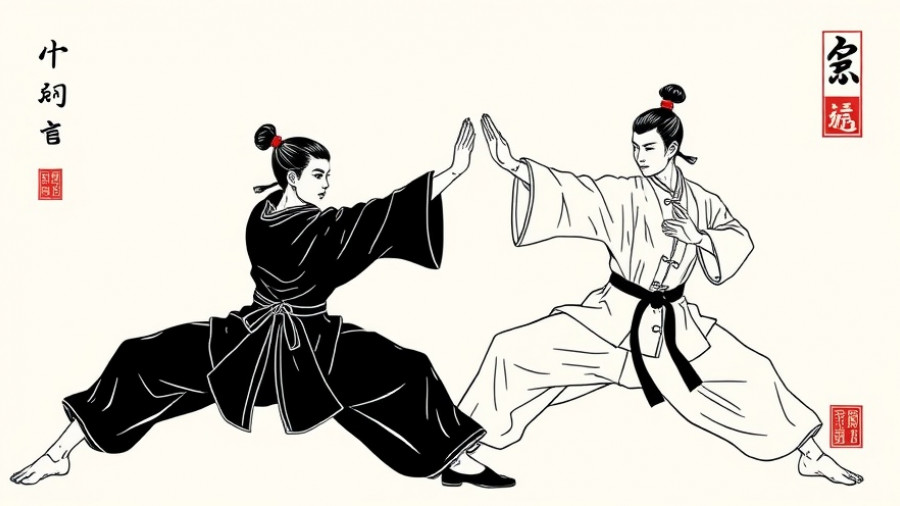
Unlocking the Secrets of the Bubishi
The Bubishi, often revered as the 'Bible of Karate', is more than just a martial arts manual; it serves as a profound testament to the journey of martial arts from China to Okinawa. Unlike conventional books, the Bubishi exists as a collection of manuscript fragments that were meticulously preserved and annotated by various Okinawan masters, reflecting an intimate lineage of teaching that intertwines deeply with Chinese martial arts traditions.
The Essence of Knowledge Transmission
Each manuscript of the Bubishi offers a unique perspective, as they were hand-copied and tailored by individual masters. This personal touch reveals the priorities of the respective teachers—some focus on combat techniques while others emphasize breathing exercises or body mechanics. The authenticity of these fragments lies in their diverse representations of the same fundamental teachings, illustrating the deep-rooted cultural practice of martial knowledge being passed from master to pupil, adapting with each generation.
A Glimpse into History and Tradition
Tracing its origins back to the Fujian province of China, the Bubishi's journey to Okinawa is intertwined with historical figures like Higaonna Kanryo, who utilized it to shape his teachings. Instead of being a formalized manual, the Bubishi presents a collaborative effort, a veritable synthesis of techniques, strategies, and medicinal practices that have been instrumental in shaping the core systems of Okinawan karate like Shorin-ryu and Goju-ryu. These practices, derived from centuries of accumulated wisdom, continue to resonate with modern martial artists seeking authentic self-defense and combative strategies.
The Modern-Day Bubishi: A Construct of Interpretations
Modern interpretations of the Bubishi, especially Patrick McCarthy's compilations, highlight its significance in leading martial artists today. These versions are not mere reproductions but critically analyzed texts that amalgamate fragments into a coherent understanding of martial principles. Such modern assemblies preserve the essence of the Bubishi while opening doors for contemporary application in self-defense, kata bunkai classes, and realistic martial arts training.
Practical Insights: What the Bubishi Teaches Us
Understanding the Bubishi goes beyond technical acumen; it allows practitioners to explore the philosophical underpinnings of martial arts. The Bubishi emphasizes adaptability—an essential quality for any martial artist. By learning through different manuscripts and teachings, students can discover personal techniques that resonate with their inherent style. This adaptability reflects the essence of traditional karate, encouraging a blend of individual creativity and foundational principles.
Integrating Bubishi Knowledge into Contemporary Martial Arts
For those engaging in practical karate training in Gurnee or local communities, engaging with Bubishi principles can lead to enhanced insights. Integrating strategies from the Bubishi into kata-based training or real-world self-defense applications empowers students with a deeper understanding of their movements. Furthermore, martial arts instructors should consider incorporating Bubishi insights into their teaching curriculums, enriching the learning experience for adults and fostering a connection to traditional origins.
Final Thoughts
The Bubishi serves not only as a historical artifact but as a living document that inspires martial artists worldwide. It encapsulates a journey that spans generations and cultures, granting valuable insights into combat, philosophy, and healing practices. By exploring its teachings, practitioners can deepen their martial journey, connecting the ancient with the modern. As we continue to explore these fragments, we uncover not just a martial arts manual but a path to self-discovery and mastery.
 Add Row
Add Row  Add
Add 




Write A Comment